STEM
Light Demo
How we use light.
Evelyn J. Boettcher
May 1, 2023
Physicist
I am a physicist. A physicist is someone that studies the physical world around us. It is considered one of the hard sciences. We try to answer questions?
- These questions lead to new understandings.
- They also lead to more questions that we try to answer.
The result of these questions help make the world better.
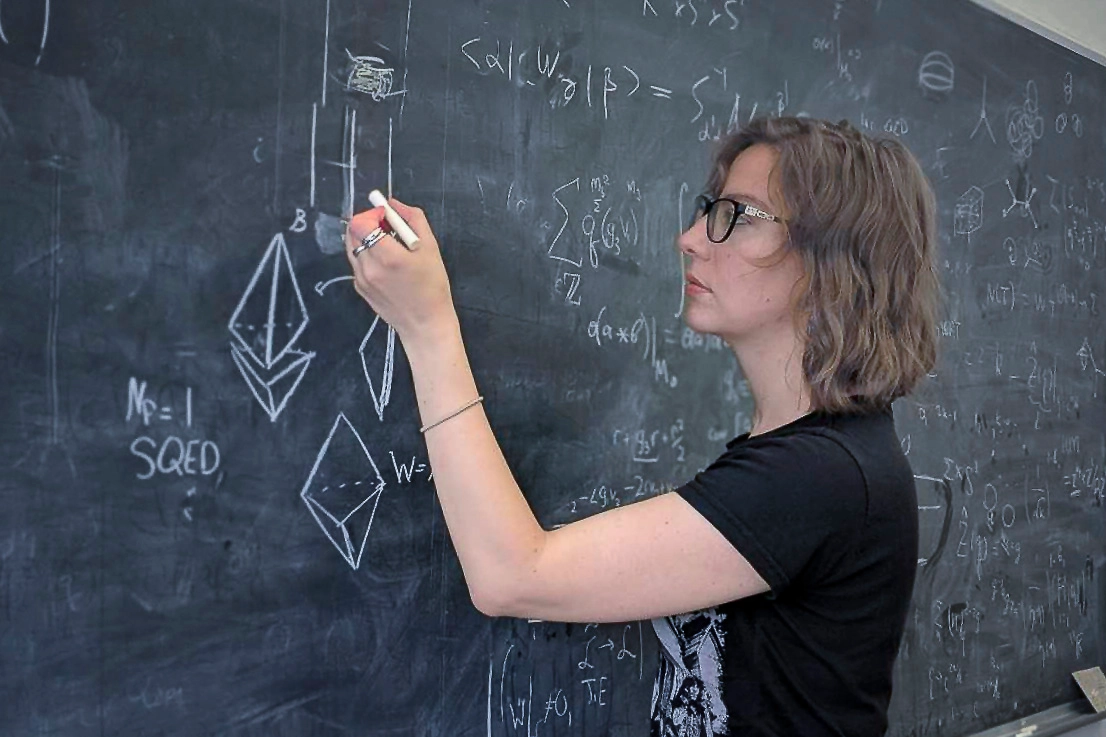


One of the hardest parts about being a physicist is trying to answer seemingly easy questions.
Why is the ocean blue? or Why is the sky blue?
Easy sounding questions
Questions are only easy;
- if you already know the answer(s).
One reason easy sounding questions are hard to answer is because people don’t want to look stupid.

Who wants to make a mistake answering a kindergartener’s question?
Why is the ocean blue?
- The ocean floor is not blue.
- A cup of water is not blue.
However, deeper the water, the bluer it is.
Fun Fact:
The answer to this question, explains why we see only certain colors of light.
Light
So what is light?
Light is an electromagnetic wave.
Luckily, you are already familer with them.
Electromagentic waves
\(c=\lambda\nu\)
- c = speed of light
- \(\lambda\) = Wavelength (m)
- \(\nu\) = frequence (1/sec)
Load (2013)
Electromagnetic waves (EM)
EM waves are electric and magnetic fields that travel at the speed of Light (in a vacumm)
Depending on wavelength it has different amounts of energy.
\(E=h\nu\)
Low frequencies are radio waves, wifi waves. They can have a wavelength in meters.
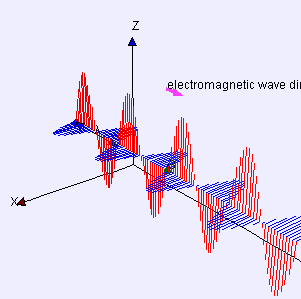
Our eyes are only ~1 inch wide, so it makes sense we can not see these wavelength.
High frequency wavelengths are really small. These are the gamma rays, x-rays. X-rays are so small that they go right through many types of material. So it makes sense that we can not see those.
But there are lots of wavelengths in between these. So why do we only see in the “visible” spectrum?
Which, brings us back to
Why the ocean is blue?
Why the ocean is blue?
Name one thing our eyes and the oceans have in common.
They are both made out of water

Absorption of light in water
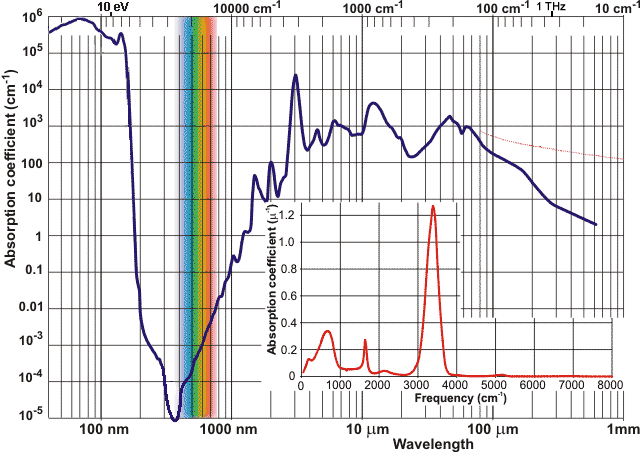
water absorption
There is a narrow band where water does not absorb EM waves.
Blue happens to be absorbed the least!
Why Oceans are blue
When white light enters the water everything else gets absorbed.
The light that comes back is basically blue.
Our eyes are made out of water.
So if we want to see in low light conditions, we needed to evolve to see in this band.


Breaking it down
What is white light?
- Contains colors: Red, Green, Yellow & Blue
- Electromagnetic wave
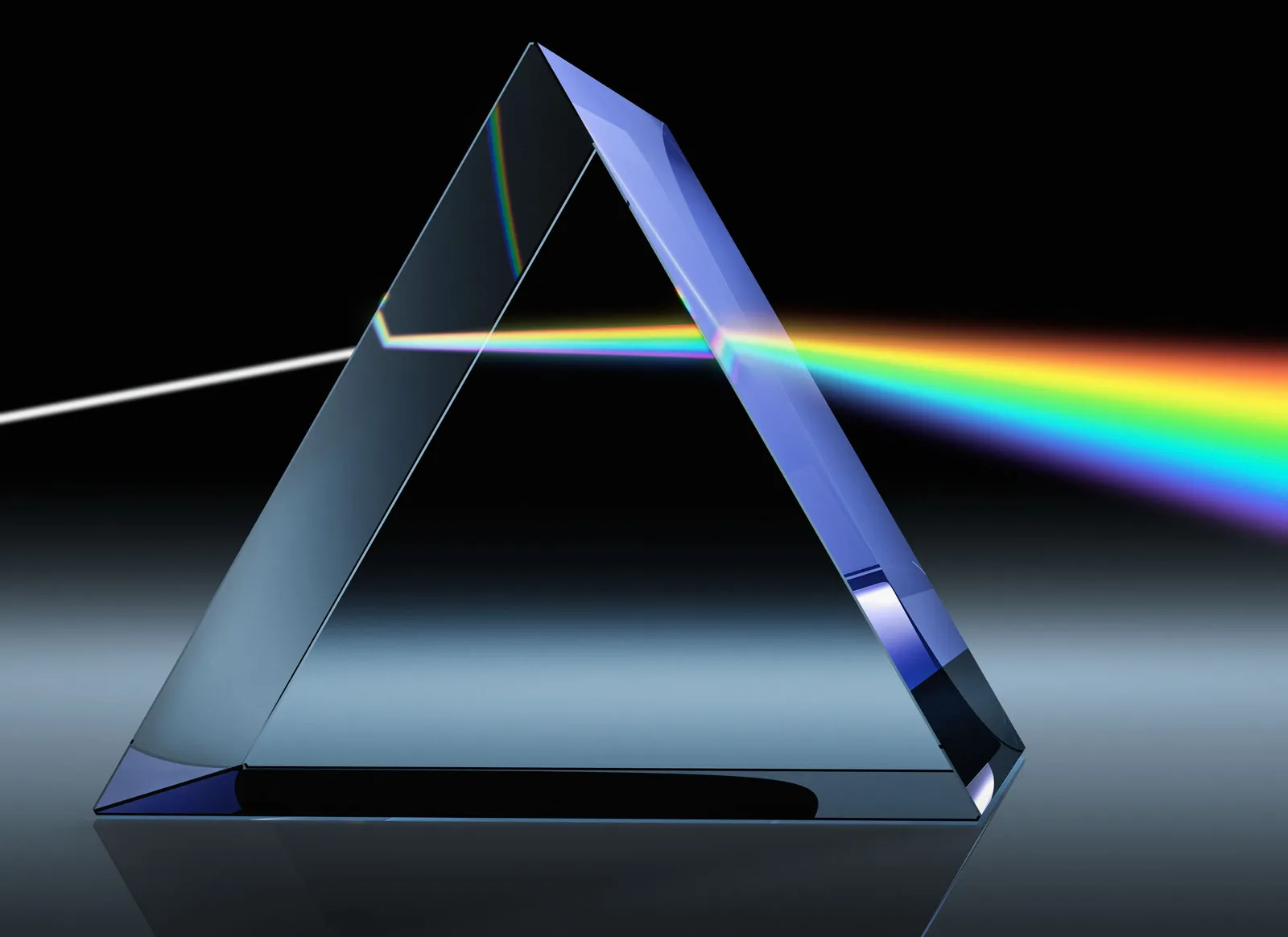
How is this useful
How is this useful
Knowing how light travels in a material is used in:
- Farming: Plant health, soil health
- Finding mineral deposits
- Identifying chemical spills
- Identifying what the planets and stars are made of
Because, different wavelengths get absorbed in the atmosphere differently.
You need to correct for the current atmosphere conditions to correctly identify materials.
 Mishra et al. (2017)
Mishra et al. (2017)
How is light used to identify materials
Scientists use spectroscopy to identify materials.
Each material has a unique spectral signature.
The easiest way to get the unique colors from a material is to cause the light to bend.
Each color will bend a different amount. This allows you to see the different colors coming from it.
Outer Space
How does one figure out what a sun or planets are if you never went there?
Use the light coming from the stars.
The light is coming from that star/planet and we can examine it.
Helium
This method was used to prove helium existed years before it was found on earth.
- Helium discovered on sun: 1859
- Helium discovered on Earth: 1895

Physicist
If we did not have people that tried to answer, “Why is the ocean blue?””
We would not have the ability to
- Remotely analyze plant health or
- Know what the stars are made of.
- We would now know why we see in the visible spectrum.
Why is the sky blue?
Not a simple answer.
- Absorptions
- Refraction
Also, Scattering
Another reason why it is hard to answer simple questions.
The answers tend to be complicated!
Now, we have to understand scattering too.

You have to understand lots of different areas of science, just to answer a “easy” question.
Relfection and Refracton
Before we get to scattering, let’s talk about reflection and refraction
Let’s take a ball. If I throw a ball, when it hits something, it either bounces back or moves through the object.
- Like dropping a penny into a wishing well.
For light, when light encounters an object, either reflects (bounces back) or refracts (moves through). The forward direction, giving rise to refraction and absorption. The backward direction, causing reflection. How it refracts and reflects is governed by physical laws.

“Reflection and Refraction” (2020)
Small Things
However, when things get small, think atomic scale.
All bets are off.
Under certain conditions when the dimensions of the object are on the order of the wavelength of light (nanometers), the light will be spread in all directions. This is called Scattering.
Reflected or refracted light goes in one direction as determined by the laws of reflection and refraction.
Blue light scatters more than the other colors, because it’s wavelength is ½ the size of red’s wavelength
The Sun appears reddish-yellow because the blue light is scattered away!
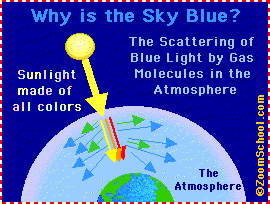
Refraction
Light is lazy. It will take the path that takes the least time (this is actually a law!). Light will travel in a straight line unless there is a change in the material or material’s density.
This is how lenses work. There is a relationship between the angle a light enters a material and the material’s index of refraction.
When light enters our atmosphere it will bend. Depending of the wavelength it bends more.
Have you wondered why the sunlight still can be seen after it already sets.
Lenses
Light goes into the lenses and there is a change in material: air to glass. This can cause the light to bend. You can make lenses:
- to focus light: think glasses or
- spread light out
Lense Demo
Lenses are expensive.
Cost of a lens ranges from $10 to $10,000 or more. So playing with lenses tends to be done with only a few shapes by a professional.
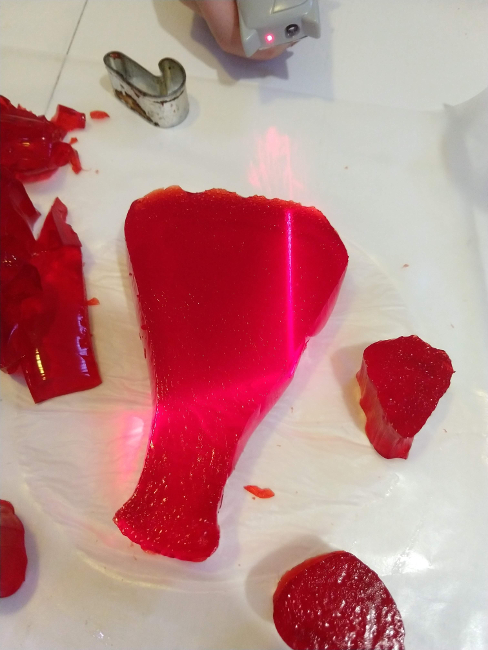
Luckily for us, jello makes great lenses for playing with.
We can use cookie cutters to make our lenses in any shape!
From two simple questions
Topics covered.
- Snell’s law
- Fermet’s principle
- Absorption
- Spectroscopy
- Discovery of Helium
- Atoms
Light and energy relationship: \(E = h\nu\)
Thank you
I leave you with one question
How is a rainbow made?

nasa image rainbow
Equipment Needed
- Jello Jigglers
- Lasers
- spectral scope

STEM Light Demo
